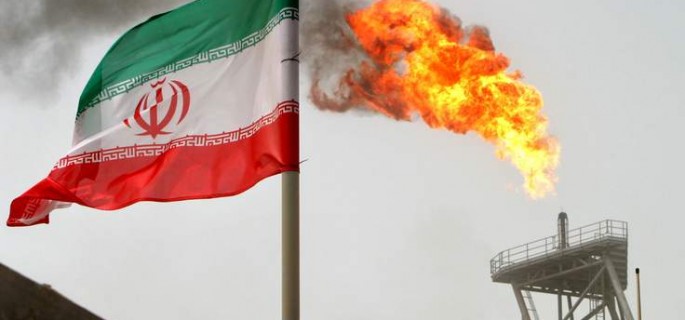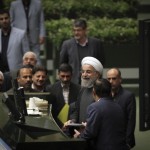Opec: No Deal Amid Saudi-Iran Stand-Off

Oil prices have remained flat in early Asian trading, as investors await the outcome of today’s Opec meeting in Vienna.
Early this morning, Brent crude was trading at just under $50 a barrel – less than half the level it reached in June 2014 and a concern to oil-producing nations. The price briefly went above $50 last week for the first time this year.
The 13-nation group has previously cut production to boost prices and sources say the group will likely consider a production curb at today’s meeting.
“The Gulf Cooperation Council is looking for coordinated action at the meeting,” a senior OPEC source said, referring to a group combining OPEC’s biggest producer Saudi Arabia and its Gulf allies Qatar, Kuwait and the United Arab Emirates.

But this will not be a straightforward move, mainly due to Iran’s recent readmission to world oil markets.
Since the nuclear deal between Iran and the US in 2015, which came into force in January, sanctions have been lifted and the country has aggressively increased production.
It appears unlikely that this will stop, with Iran’s oil minister Bijan Zanganeh saying that a doubling of exports of Iranian oil “has had no negative impact” on the market and “has been absorbed well”.

Mr Zanganeh on Wednesday rejected suggestions OPEC would agree on a general cap in the Austrian capital, saying: “One of our main ideas is to have country quotas, but I don’t think we can reach an agreement on this subject at this meeting.”
Iran exported just over 2 million barrels of oil every day last month and this number is predicted to double, as they are currently producing around 3.8 million barrels a day.
This has clashed with rival Saudi Arabia’s initial push for the group to cut production – if Saudi Arabia was to cut production then it would leave more room for Iran to sell its oil.
Any agreement between Riyadh and Tehran would also be seen as a big surprise by the market, which in the past two years has grown increasingly used to clashes between the political foes as they fight proxy wars in Syria and Yemen.

Nevertheless, Saudi oil minister Khalid al Falih said ahead of the meeting: “We will come up with a consensus. OPEC has always managed to come up with a consensus.”
One possible solution may be a sliding output cap, shifting between two benchmarks – both above 30 million barrels a day. It would be a first for the organisation.
Meanwhile, poorer OPEC nations are worried that the conflict between the Sunni-led kingdom and the Shia Islamic Republic could play a big part if prices dip again.
Venezuela, struggling with severe food shortages and inflation predicted to reach 700% this year, relies on exporting its oil – the oil and gas sector is around 25% of its GDP.
They say the recent price recovery has been due to one-off factors, such as the effect of Canada’s wildfires and a Kuwaiti strike on production – not by OPEC’s strategy.
Venezuelan oil minister Eulogio del Pino said: “It’s not the situation of the market, it’s the circumstances. When the circumstances are removed, what is going to happen?”
There may be little sympathy from the Saudi side of the negotiating table, however, with Saudi Deputy Crown Prince Mohammed bin Salman quoted as having told Bloomberg in April: “We don’t care about oil prices – $30 or $70 – they’re all the same to us.”
IG Markets’ Bernard Aw noted that the lack of cooperation between OPEC members “has rendered the cartel somewhat ineffective”.
“Oil prices are still hovering near the $50 mark, and whether it will convincingly break above this level depends on how the OPEC meeting turns out,” he said in a note to investors.
Source: Sky





























